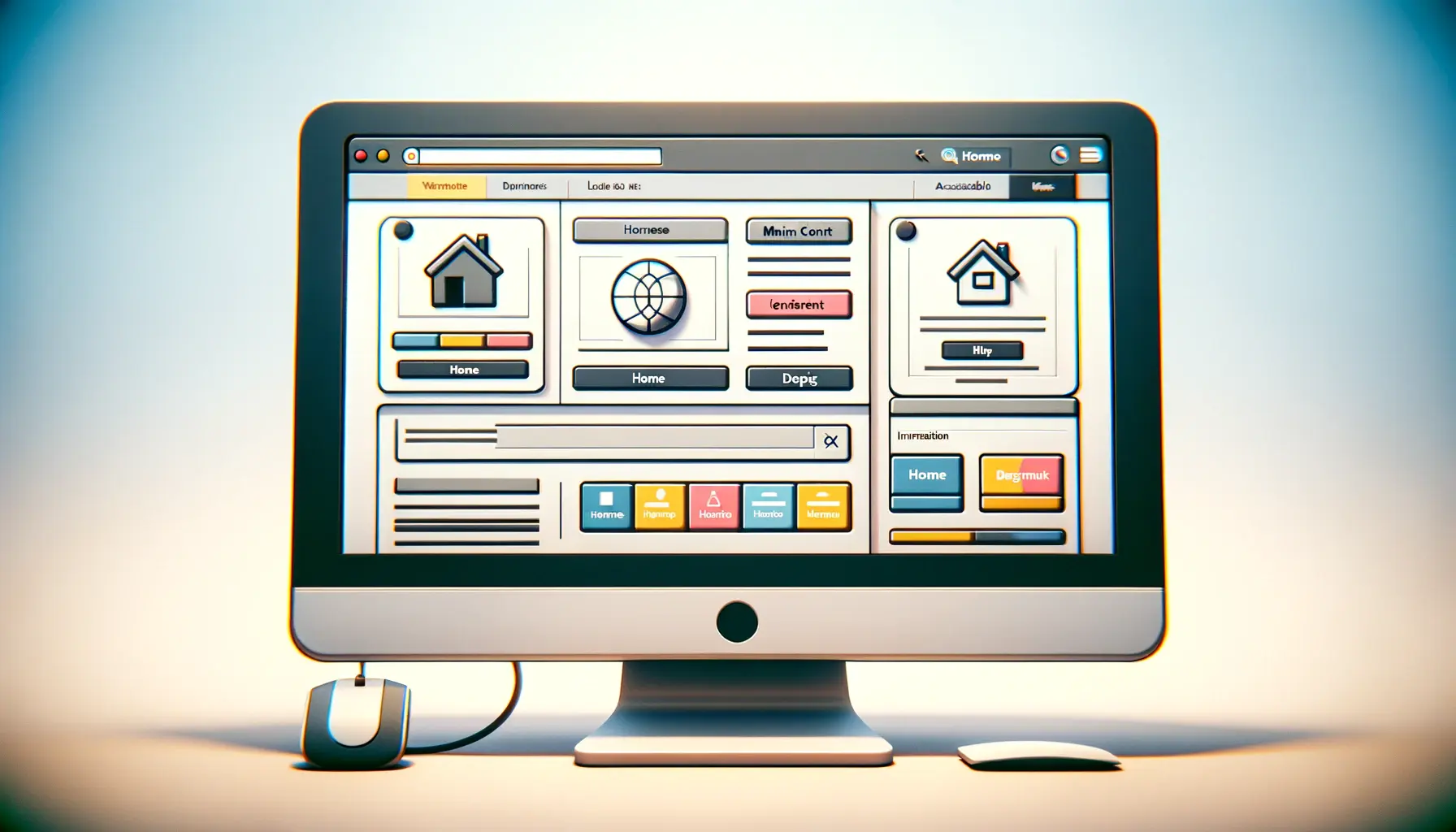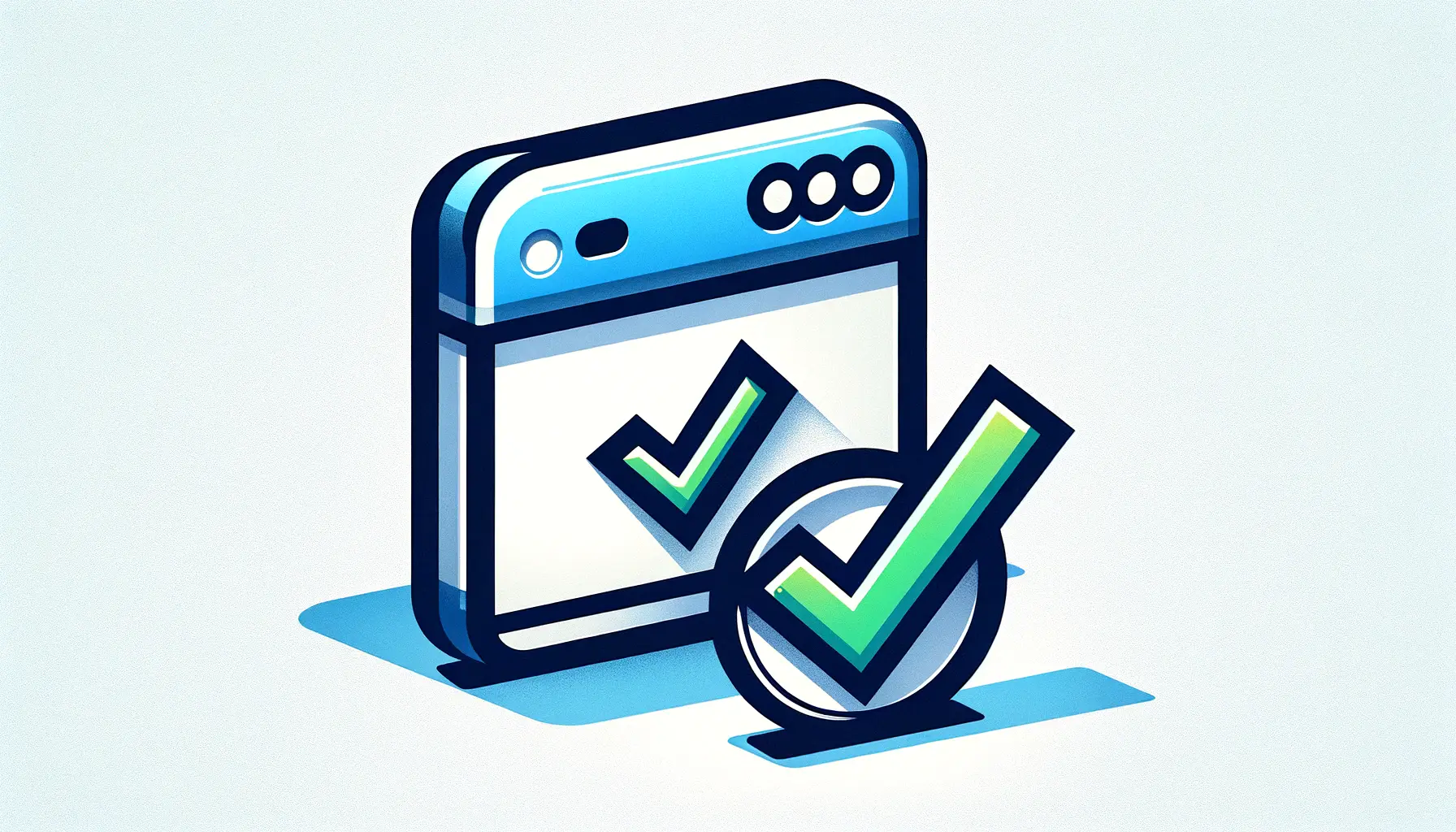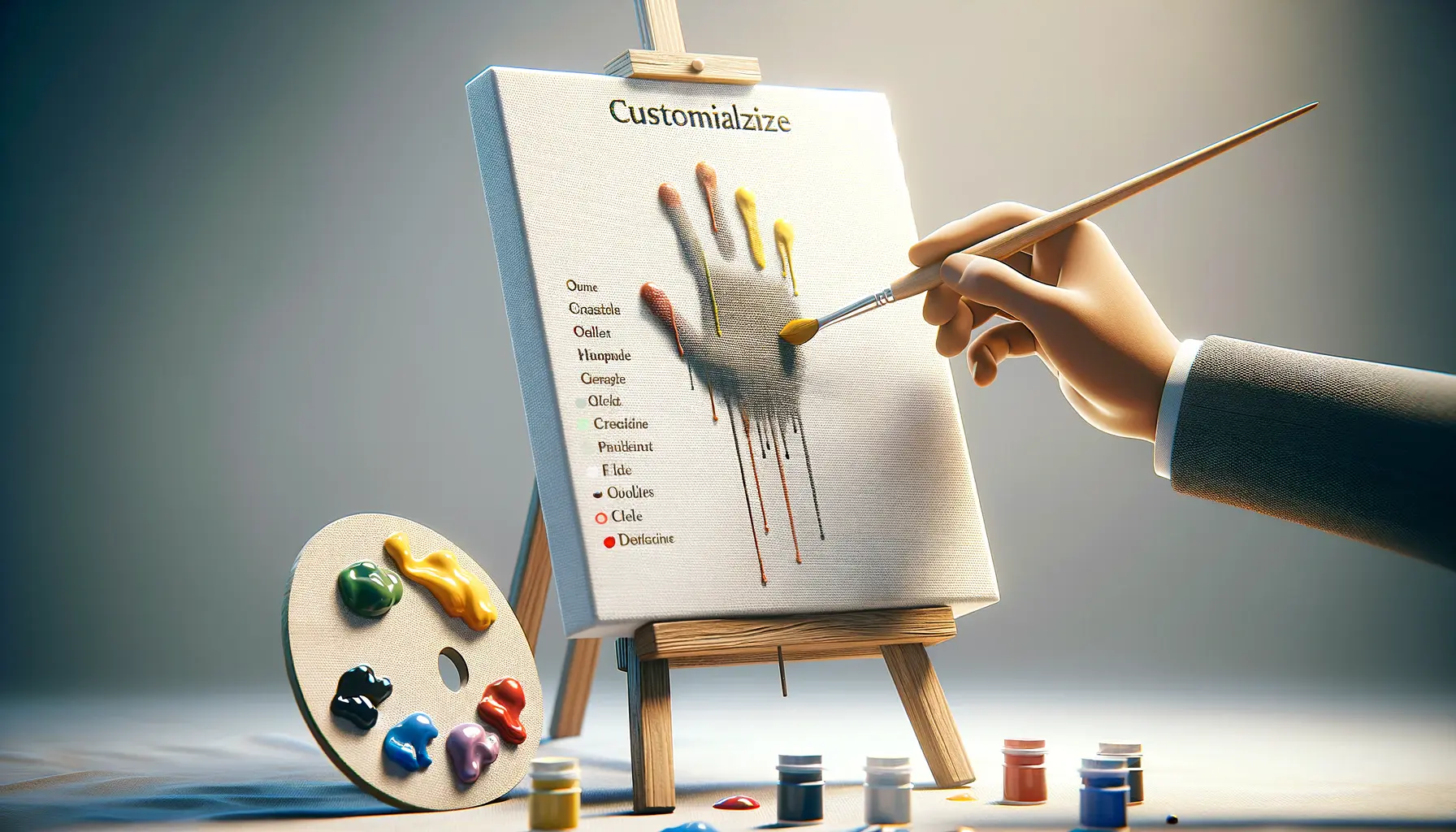In today’s digital age, the importance of a unique web design strategy for brands cannot be overstated.
As the digital storefront for your business, a website not only serves as the first point of contact with potential customers but also plays a crucial role in establishing your brand’s identity and setting you apart from the competition.
A unique web design strategy goes beyond aesthetics, encompassing usability, user experience, and the overall message your brand wishes to convey.
In a world where consumers are bombarded with information and choices, having a distinctive online presence is key to capturing and retaining attention.
Moreover, a unique web design strategy is instrumental in building trust and credibility with your audience.
It reflects your brand’s values, mission, and professionalism, encouraging visitors to engage with your content, explore your products or services, and ultimately, make a purchase.
With the right approach, your website can become a powerful tool for storytelling, connecting with your audience on an emotional level, and driving business growth.
Therefore, investing in a unique web design strategy is not just about creating a visually appealing site; it’s about crafting an online experience that resonates with your target audience and supports your business objectives.
- The Foundation of a Unique Web Design Strategy
- Strategic Content and Visual Elements
- Optimizing for Search Engines and Mobile Devices
- Integrating Social Media and Analytics
- Creating a Seamless E-commerce Experience
- Building Community and Engagement
- Continuous Improvement and Innovation
- Empowering Your Brand Through a Unique Web Design Strategy
- FAQs on Unique Web Design Strategy
The Foundation of a Unique Web Design Strategy
Understanding Your Brand Identity
At the heart of any unique web design strategy lies a deep understanding of your brand identity.
This encompasses your brand’s core values, mission, target audience, and the unique selling proposition (USP) that sets you apart from competitors.
A well-defined brand identity serves as the blueprint for your web design, ensuring that every element, from the color scheme to the typography and imagery, aligns with your brand’s personality and communicates your message effectively.
For instance, a brand that prides itself on innovation and technology might opt for a sleek, minimalist design with interactive elements to convey its forward-thinking approach.
Conversely, a brand with a focus on sustainability and nature might incorporate earthy tones, natural imagery, and a clean, simple layout to reflect its eco-friendly values.
By tailoring your web design to your brand identity, you create a cohesive and memorable online experience that engages your target audience.
Enhancing User Experience (UX)
A unique web design strategy also prioritizes the user experience (UX), ensuring that visitors can navigate your site easily and find the information they need without frustration.
This involves organizing content logically, optimizing page load times, and designing intuitive navigation menus.
A website that is easy to use and accessible across all devices, including smartphones and tablets, is more likely to retain visitors and convert them into customers.
Moreover, incorporating elements such as clear call-to-action (CTA) buttons, engaging content, and interactive features can significantly enhance the user experience.
These elements guide visitors through your website, encouraging them to take desired actions, such as signing up for a newsletter, making a purchase, or contacting your business for more information.
By focusing on UX in your web design strategy, you not only improve customer satisfaction but also boost your website’s performance in search engine rankings, driving more organic traffic to your site.
A unique web design strategy is not just about standing out visually; it’s about creating a seamless, engaging online experience that reflects your brand’s identity and values, connects with your target audience, and supports your business goals.
Strategic Content and Visual Elements
Content and visual elements are the pillars of a unique web design strategy, serving as the primary tools for communicating your brand’s message and engaging your audience.
The strategic integration of content and visuals not only enhances the aesthetic appeal of your website but also reinforces your brand identity and values, making your online presence distinctive and memorable.
Content That Tells Your Story
Every brand has a story, and your website is the perfect platform to tell it.
The content on your site should reflect your brand’s personality, values, and the journey that led you to where you are today.
This narrative approach helps to build a connection with your audience, making your brand more relatable and trustworthy.
To effectively tell your brand’s story through your website, consider the following:
- Developing a consistent tone of voice that resonates with your target audience and reflects your brand’s personality.
- Creating compelling and original content that highlights your brand’s unique selling points and differentiates you from competitors.
- Incorporating customer testimonials, case studies, and success stories to build credibility and showcase the impact of your products or services.
Visual Elements That Captivate
The visual elements of your website, including imagery, color scheme, typography, and layout, play a crucial role in capturing the attention of visitors and conveying your brand’s identity.
A unique and cohesive visual design can significantly enhance the user experience, making your website not only beautiful but also functional.
To create a visually captivating website, consider:
- Choosing a color palette that aligns with your brand’s values and evokes the desired emotional response from your audience.
- Selecting typography that is not only on-brand but also readable across devices and screen sizes.
- Using high-quality, original images and graphics that reflect your brand’s essence and complement your content.
- Implementing a clean and organized layout that guides visitors through your site and facilitates a seamless user experience.
The strategic use of content and visual elements in your web design can transform your website from a mere digital space into a powerful storytelling tool that engages, informs, and converts your audience.
Optimizing for Search Engines and Mobile Devices
In the digital landscape, visibility is key to attracting potential customers.
A unique web design strategy must include optimization for search engines (SEO) and mobile devices to ensure your website reaches the widest possible audience.
SEO and mobile optimization are critical components that influence not only your website’s discoverability but also its usability and user satisfaction.
SEO is the process of enhancing your website to improve its ranking in search engine results pages (SERPs), making it more visible to people searching for products or services related to your business.
Mobile optimization ensures your website delivers an excellent user experience on mobile devices, where a significant portion of internet browsing occurs.
Here are strategies to optimize your website for search engines and mobile devices:
SEO Best Practices
- Keyword Research: Identify and incorporate relevant keywords into your website’s content, titles, meta descriptions, and URLs to improve your visibility in search results.
- Quality Content: Create valuable, informative, and engaging content that addresses the needs and interests of your target audience to improve dwell time and reduce bounce rates.
- Site Structure: Design a logical site structure and navigation to help search engines crawl your website more effectively and improve user experience.
- Backlinks: Earn backlinks from reputable sites to boost your website’s authority and search engine rankings.
Mobile Optimization Techniques
- Responsive Design: Implement a responsive web design that automatically adjusts to fit the screen size of any device, ensuring a seamless browsing experience for all users.
- Fast Loading Times: Optimize images, minify code, and leverage browser caching to accelerate page loading times, crucial for keeping mobile users engaged.
- Touch-Friendly Navigation: Design touch-friendly menus and buttons to enhance usability on touch devices.
- Legible Text: Use font sizes and styles that are easy to read on small screens to improve readability and user satisfaction.
By prioritizing SEO and mobile optimization in your web design strategy, you not only enhance your website’s visibility and discoverability but also provide a positive and engaging user experience, regardless of how or where your audience chooses to access your site.
Integrating Social Media and Analytics
In the realm of digital marketing, social media and analytics are indispensable tools for enhancing your brand’s online presence and understanding your audience’s behavior.
A unique web design strategy should seamlessly integrate social media to foster community engagement and incorporate analytics to track performance and inform decision-making.
Integrating social media into your web design not only amplifies your brand’s reach but also encourages user interaction and content sharing, which can significantly increase traffic to your website.
Meanwhile, analytics provide valuable insights into your website’s performance, helping you identify areas for improvement and tailor your strategy to better meet your audience’s needs.
Here’s how to effectively integrate social media and analytics into your web design:
Leveraging Social Media
- Social Sharing Buttons: Include social sharing buttons on your content pages to make it easy for visitors to share your content on their social media profiles, extending your reach.
- Social Media Feeds: Embed your brand’s social media feeds on your website to showcase your latest posts and encourage visitors to follow you on social media platforms.
- Interactive Elements: Incorporate interactive elements like comment sections or social media contests to engage your audience and foster a sense of community around your brand.
Utilizing Analytics for Informed Decisions
- Google Analytics: Implement Google Analytics or similar tools to track website traffic, user behavior, conversion rates, and other key performance indicators (KPIs).
- User Behavior Analysis: Analyze data on how users interact with your website, including which pages they visit, how long they stay, and what actions they take, to optimize the user experience.
- A/B Testing: Use A/B testing to experiment with different design elements, content, and strategies to see what works best in engaging your audience and achieving your goals.
Integrating social media and analytics into your web design strategy not only enhances your brand’s visibility and engagement but also provides you with the data-driven insights needed to continuously improve your website and marketing efforts.
Creating a Seamless E-commerce Experience
For brands operating in the e-commerce space, the importance of a unique web design strategy that facilitates a seamless shopping experience cannot be overstated.
A well-designed e-commerce website not only reflects your brand identity but also simplifies the buying process, encouraging more sales and repeat business.
Integrating key e-commerce functionalities and optimizing the user journey from product discovery to checkout is crucial for converting visitors into customers.
To create a seamless e-commerce experience, your web design strategy should focus on usability, security, and personalization.
Here’s how to ensure your e-commerce website meets the needs of your customers and supports your business goals:
Enhancing Usability
- Intuitive Navigation: Design an intuitive navigation structure that allows customers to easily find and browse products. Categories, filters, and search functionalities should be straightforward and effective.
- High-Quality Product Images: Use high-quality, detailed images to showcase your products, giving customers a clear understanding of what they are purchasing.
- Clear Product Descriptions: Provide clear, concise, and informative product descriptions that highlight the features and benefits of your products.
- Streamlined Checkout Process: Simplify the checkout process to reduce cart abandonment. This includes minimizing the number of steps, offering guest checkout options, and clearly displaying shipping costs and delivery times.
Ensuring Security
- SSL Certification: Secure your website with SSL certification to protect customer data during transactions, building trust with your audience.
- Payment Security: Implement secure, reliable payment gateways that offer multiple payment options to accommodate the preferences of your customers.
- Privacy Policy: Clearly display your privacy policy and terms of service to reassure customers about how their data is used and protected.
Personalizing the Shopping Experience
- Product Recommendations: Use customer data to offer personalized product recommendations, enhancing the shopping experience and increasing the likelihood of additional purchases.
- Customer Accounts: Allow customers to create accounts to track their orders, save favorite products, and streamline future purchases.
- Customer Reviews: Include a section for customer reviews on product pages to provide social proof and help shoppers make informed decisions.
A unique web design strategy for e-commerce websites focuses on creating a user-friendly, secure, and personalized online shopping experience that aligns with your brand identity and drives sales.
Building Community and Engagement
In the digital era, fostering a sense of community and engagement around your brand can significantly enhance customer loyalty and brand advocacy.
A unique web design strategy should facilitate interactions between your brand and its audience, as well as among the members of your community themselves.
By creating spaces for engagement and encouraging participation, you can build a strong, loyal community that supports and promotes your brand.
To build community and engagement through your web design, consider incorporating the following elements:
Interactive Features
- Forums and Discussion Boards: Implement forums or discussion boards where customers can ask questions, share experiences, and provide feedback about your products or services.
- Comment Sections: Enable comment sections on blog posts or product pages to allow customers to engage with your content and with each other, fostering a sense of community.
- Live Chat and Support: Offer live chat support to provide immediate assistance and engage with customers in real-time, enhancing the customer service experience.
User-Generated Content
- Customer Reviews and Testimonials: Encourage customers to leave reviews and testimonials, which not only serve as social proof but also engage your audience and contribute to community building.
- Photo and Story Sharing: Create opportunities for customers to share their own photos and stories of using your products, such as through contests or featured customer spotlights on your website.
Engagement Through Personalization
- Personalized User Experiences: Use data analytics to offer personalized content, product recommendations, and special offers based on individual user behavior and preferences.
- Membership or Loyalty Programs: Develop membership or loyalty programs that reward customers for their engagement and loyalty, encouraging continued participation and advocacy for your brand.
Creating a community around your brand not only enhances customer engagement but also turns your audience into brand ambassadors who share their positive experiences and attract new customers to your business.
Continuous Improvement and Innovation
In the fast-paced world of digital marketing, staying ahead requires a commitment to continuous improvement and innovation.
A unique web design strategy is not a one-time project but an ongoing process that evolves with your brand, your audience’s needs, and the latest technological advancements.
By regularly evaluating and updating your website, you can ensure it remains relevant, engaging, and effective in achieving your business goals.
To foster a culture of continuous improvement and innovation in your web design strategy, consider the following approaches:
Regular Website Audits
- Performance Analysis: Conduct regular performance analyses to identify areas where your website can be optimized for speed, usability, and SEO.
- User Feedback: Gather and analyze user feedback to understand their needs, preferences, and pain points, which can inform future design updates.
- Competitive Analysis: Keep an eye on competitors’ websites to identify trends, innovations, and best practices that could be adapted to improve your own web strategy.
Embracing New Technologies
- Responsive Design: Continuously update your website’s design to ensure it is responsive and accessible on all devices and screen sizes.
- Emerging Web Technologies: Explore and integrate emerging web technologies, such as augmented reality (AR), virtual reality (VR), or artificial intelligence (AI), to enhance the user experience and differentiate your brand.
Adapting to User Behavior and Trends
- Analytics and Data: Leverage analytics and user data to stay informed about changing user behaviors and preferences, allowing you to adapt your web design accordingly.
- Design Trends: Stay updated on the latest web design trends and incorporate those that align with your brand identity and enhance the user experience.
A successful web design strategy is dynamic, adapting to new challenges and opportunities with the goal of continuously improving the user experience and driving business growth. By embracing change and seeking out innovation, you can ensure your website remains a powerful tool for connecting with your audience and achieving your marketing objectives.
Empowering Your Brand Through a Unique Web Design Strategy
In the digital age, where competition is fierce and attention spans are short, a unique web design strategy emerges as a critical factor in establishing a strong online presence.
It’s not just about having a website; it’s about having a website that embodies your brand’s identity, values, and mission, setting you apart from the competition.
This article has explored the multifaceted approach to creating a web design strategy that resonates with your target audience, enhances user experience, and drives business growth.
Key Takeaways for a Successful Web Design Strategy
Developing a unique web design strategy is an ongoing journey of understanding your brand, your audience, and the digital landscape.
Here are the key takeaways to guide you in this process:
- Start with a deep understanding of your brand identity to ensure your web design aligns with your brand’s values and message.
- Focus on creating a seamless user experience, optimizing for both desktop and mobile devices to cater to your audience’s preferences.
- Integrate social media and analytics to engage with your community and gain insights into your website’s performance.
- Embrace continuous improvement and innovation to keep your website relevant and ahead of digital trends.
By prioritizing these elements, your brand can harness the power of a unique web design strategy to captivate and engage your audience.
Remember, your website is often the first point of contact between your brand and potential customers.
Making that first impression count with a distinctive and functional design can make all the difference in today’s digital world.
Looking Ahead: The Future of Web Design
As we look to the future, the importance of a unique web design strategy will only continue to grow.
With advancements in technology and changes in consumer behavior, brands must be ready to adapt and innovate.
Whether it’s through the integration of new technologies like AI and VR, or by staying ahead of design trends, the future of web design is ripe with opportunities for brands willing to invest in their online presence.
In conclusion, a unique web design strategy is not just a necessity but a powerful tool for differentiation, engagement, and growth.
It’s about creating an online experience that reflects your brand’s uniqueness and connects with your audience on a deeper level.
With the right approach, your website can become your brand’s most valuable asset in the digital marketplace.
Quality web design is key for a great website! Check out our service page to partner with an expert web design agency.
FAQs on Unique Web Design Strategy
Explore common queries about why every brand needs a unique web design strategy to enhance their online presence and brand identity.
A unique web design strategy involves creating a customized website that reflects a brand’s identity, values, and goals, ensuring it stands out in the digital landscape.
Branding in web design is crucial for establishing a memorable and cohesive online presence that resonates with the target audience and builds brand recognition.
Effective web design enhances user experience, increases visibility, and supports marketing efforts, directly contributing to brand growth and customer engagement.
Yes, a well-designed website can significantly influence customer retention by providing a positive user experience that encourages repeat visits and loyalty.
Key elements include responsive design, intuitive navigation, brand-consistent visuals, engaging content, and features that enhance user interaction and accessibility.
Regular updates, informed by user feedback and evolving brand goals, are essential to maintain a website’s uniqueness and relevance in a competitive market.
SEO is integral to web design strategy, ensuring the website ranks well in search engine results, attracting more organic traffic and potential customers.
Absolutely, a unique web design tailored to the target audience can significantly improve conversion rates by enhancing user experience and facilitating the buyer’s journey.













